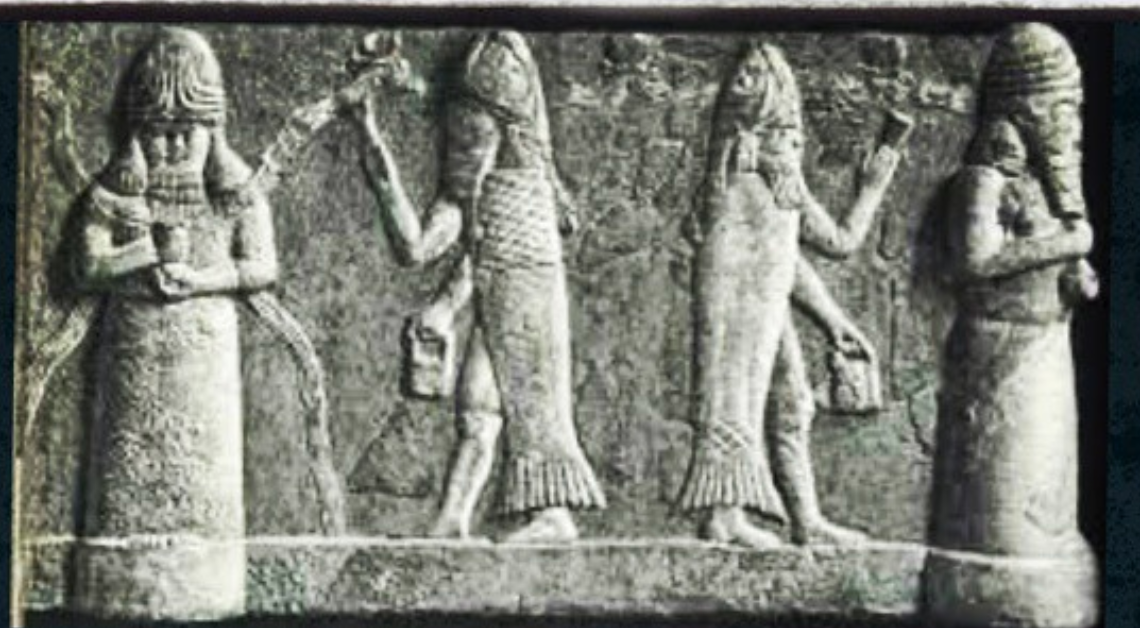
This week’s lesson is a combination of original IG posts on June 15 and June 19, 2015 of the Monday Morning Mermaid Lessons #2 and #3.
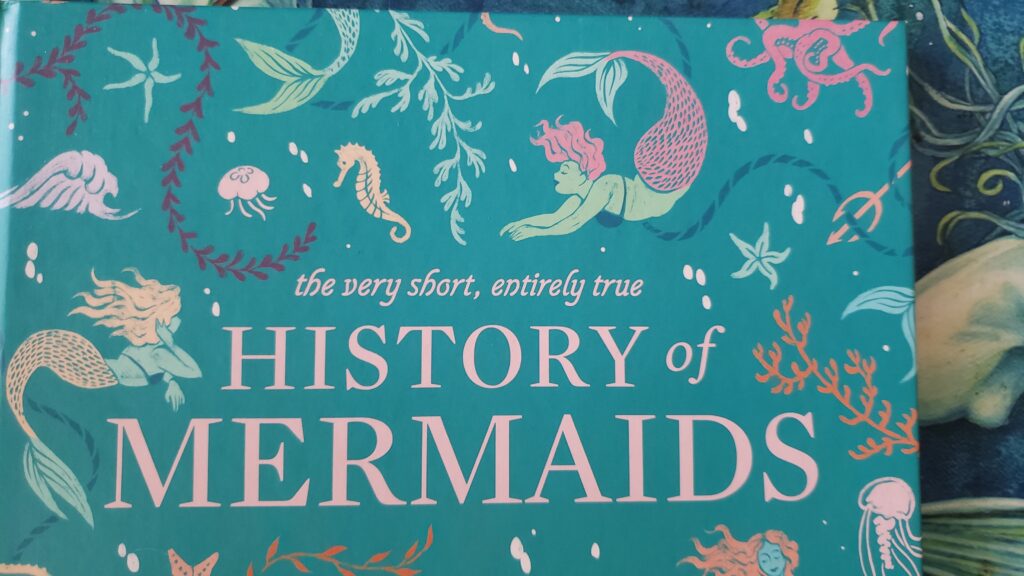
Despite the last few mermaid blogs being heavily influenced with Irish mermaids, it is NOT Ireland, (nor any of the other European countries that dominate today most of Mermaid culture), but Ancient Babylonia, Mesopotamian 4,000 years ago, and Assyria circa 1000 B.C.E. that have the rightful claim to the first documents of merfolk.
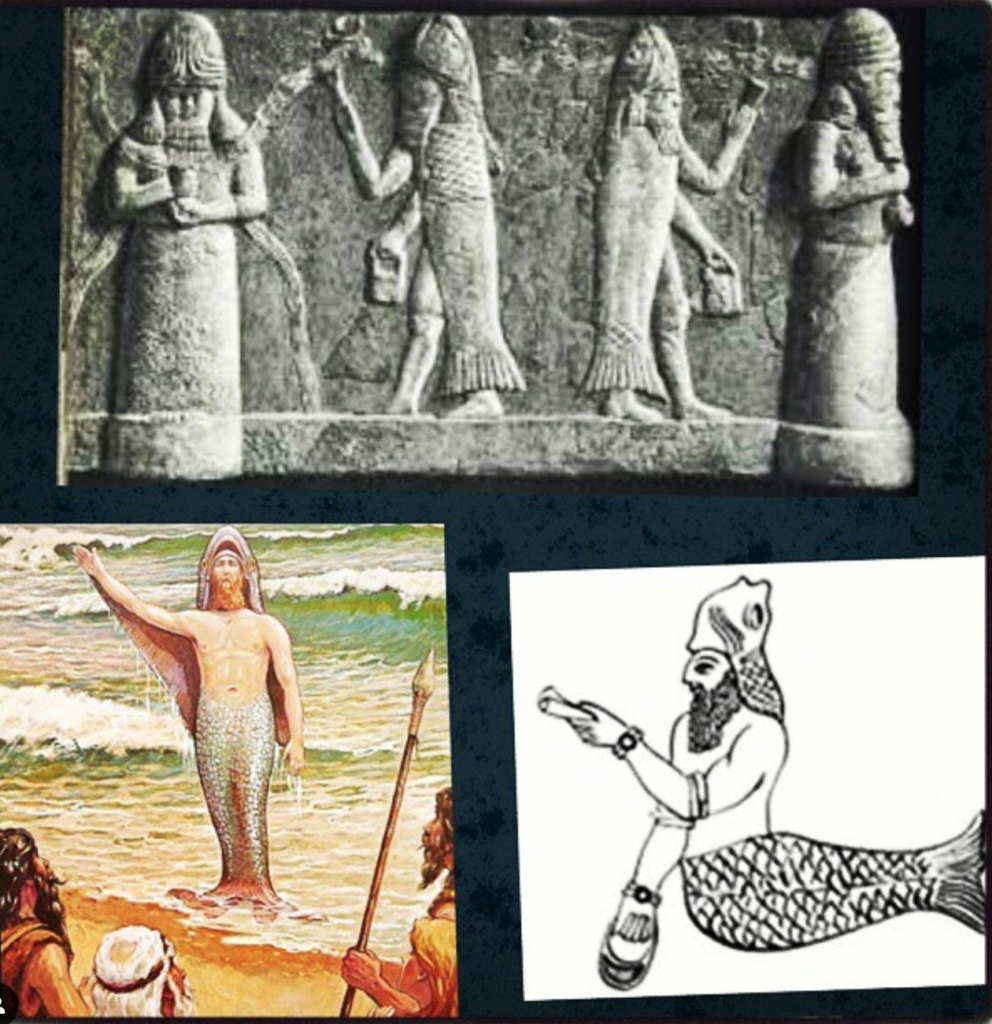
The earliest historical mention of mermaids/merfolk was actually a merman named Oannes, The Babylonian Fish-Man dating back to 5,000 B.C.E.
Oannes, the sun god of ancient Sumerians, was depicted as a human fish hybrid. He ascended from the ocean each morning and descended into her in the evening, where he was his aquatic self.
He was friendly to humans – he taught them about writing and science. There are many paintings of Oannes as his sea being version that remain to this day, including one that covers an entire wall in the Louvre Museum in Paris. In fact, one of the first images ever made of a merperson was a picture of Oannes, carved on the walls of a palace built in the city of Dur-Sharrukin under the rule of King Sargon II.
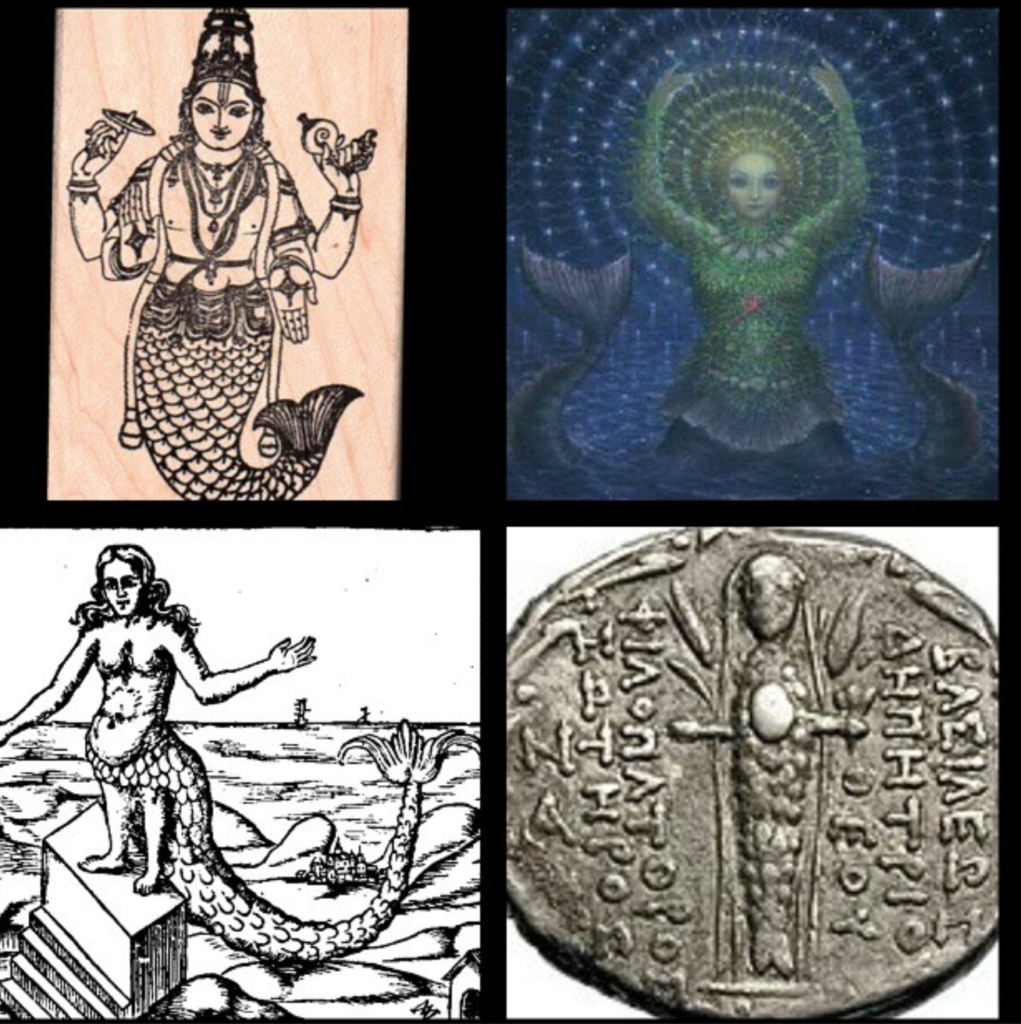
Atargatis is our first recorded mermaid circa 1000 B.C.E from Assyria. Legend tells us that she fell in love with a human, a young shepherd. One version of the story says she accidentally killed him; others say she became pregnant and was shocked when their daughter was born human. Whichever was the case, led the distraught and heartbroken goddess to throw herself into a lake. The water could not hide her other-worldly beauty, and she became half-fish, half-human and continued to remain divine.
“Darwin may have been quite correct in his theory that man descended from the apes of the forest, but surely woman rose from the frothy sea, as resplendent as Aphrodite on her scalloped chariot.” – Margot Datz, A Survival Guide for Landlocked Mermaids
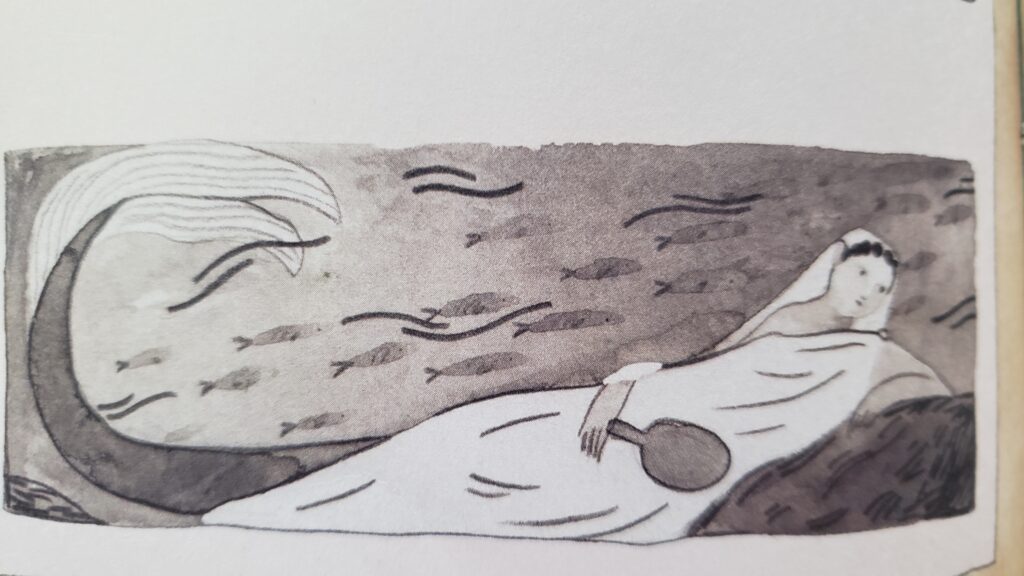
Finally, our third and final oldest merfolk, the Mesopotamian Merman, Enki.
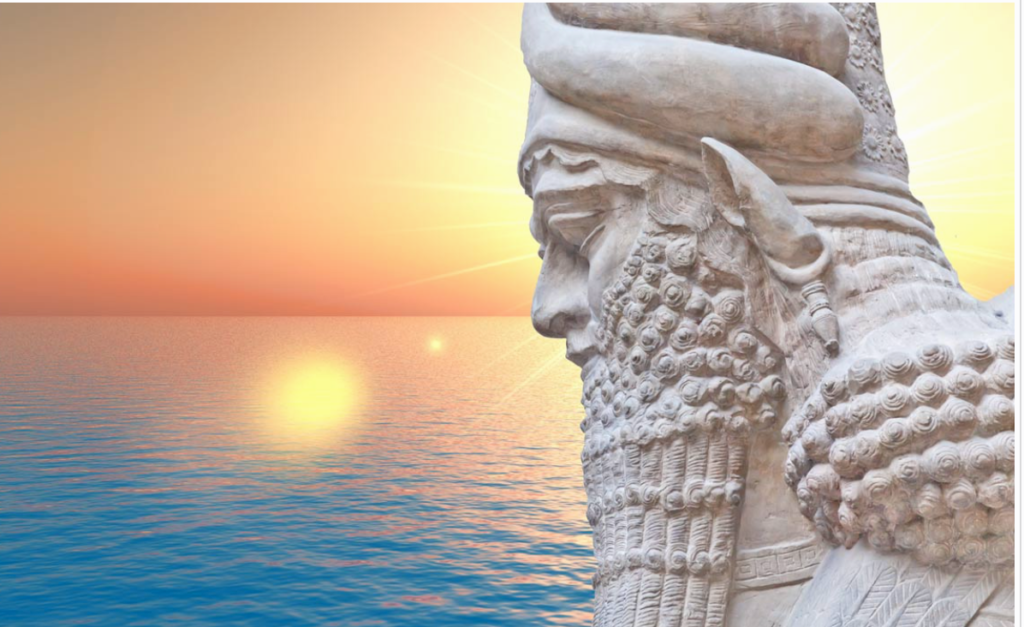
In Sumerian mythology, Enki is a god of creation, intelligence, crafts, water, fertility, magic and mischief. He is also known as Ea in Akkadian and Babylonian mythology. To learn more of his myth, I have included this link that I found very in depth.
“Enki, the lord of abundance and of steadfast decisions, the wise and knowing lord of the Land, the expert of the gods, chosen for wisdom, the lord of Eridug, shall change the speech in their mouths, as many as he had placed there, and so the speech of mankind is truly one.” -Neo-Sumerian text Enmerkar and the Lord of Aratta
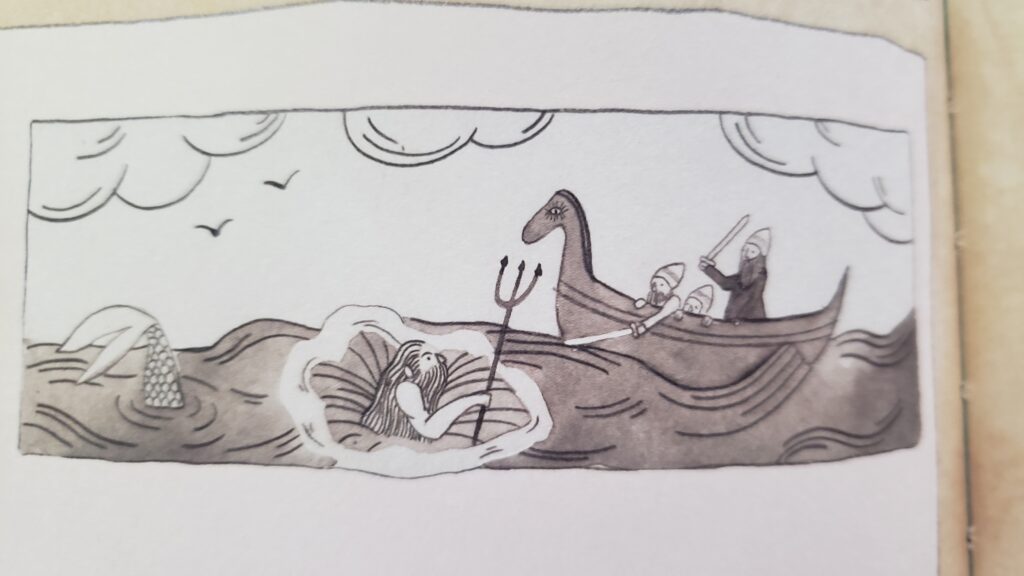
Mermaid History is really quite fascinating, isn’t it? I have learned that no matter what part of the world or country you may visit, you will find a version, a myth, of a mermaid, or water folk of some sort. Which makes you wonder….if EVERY culture has a mermaid tale, could mermaids have been or are, REAL?
Thank you for continuing to enjoy these little morsels of Mermaid Traveling History. Is there a country or culture that you would like to learn more about their Mermaid History? Leave in the comments below or message us directly! We love hearing what makes you curious.